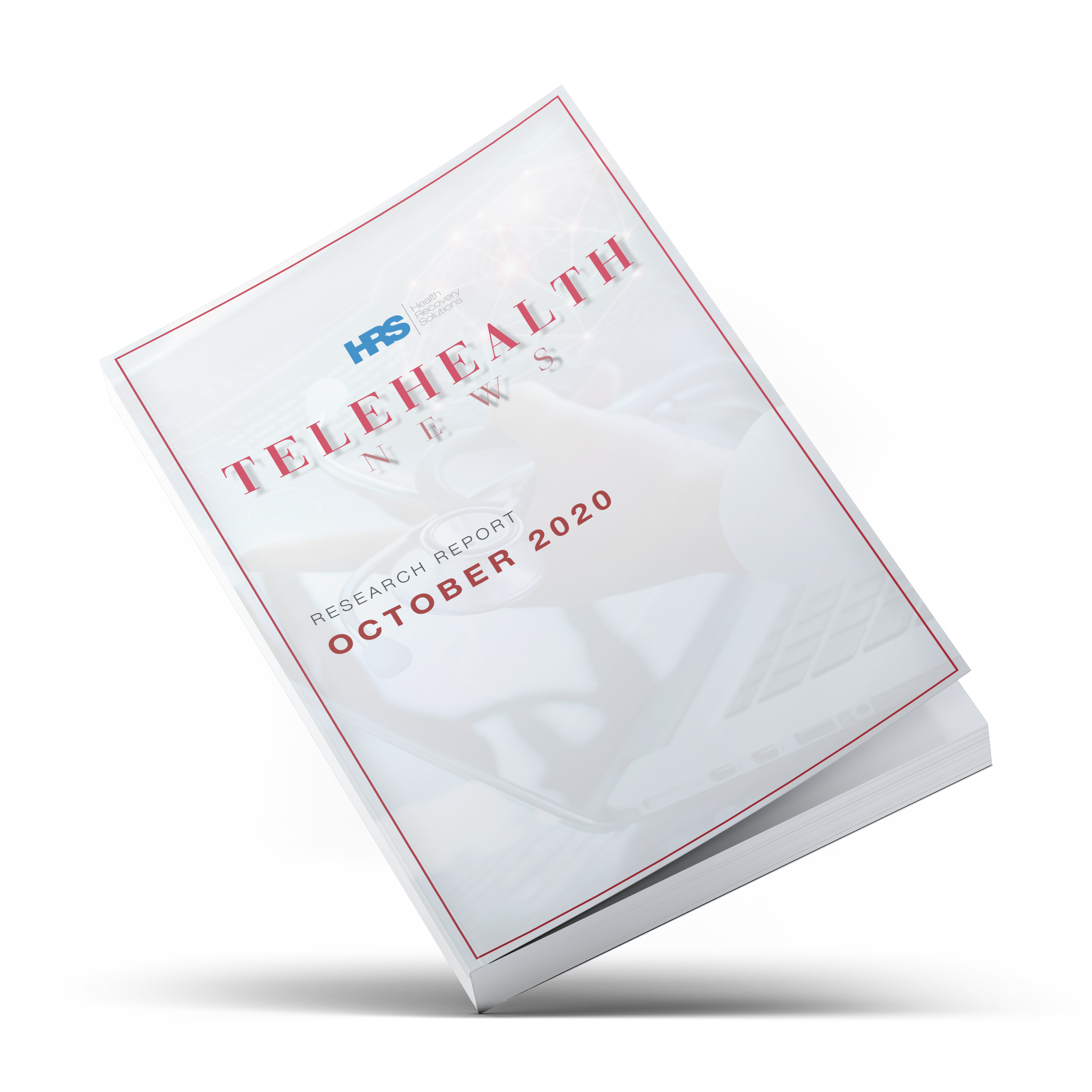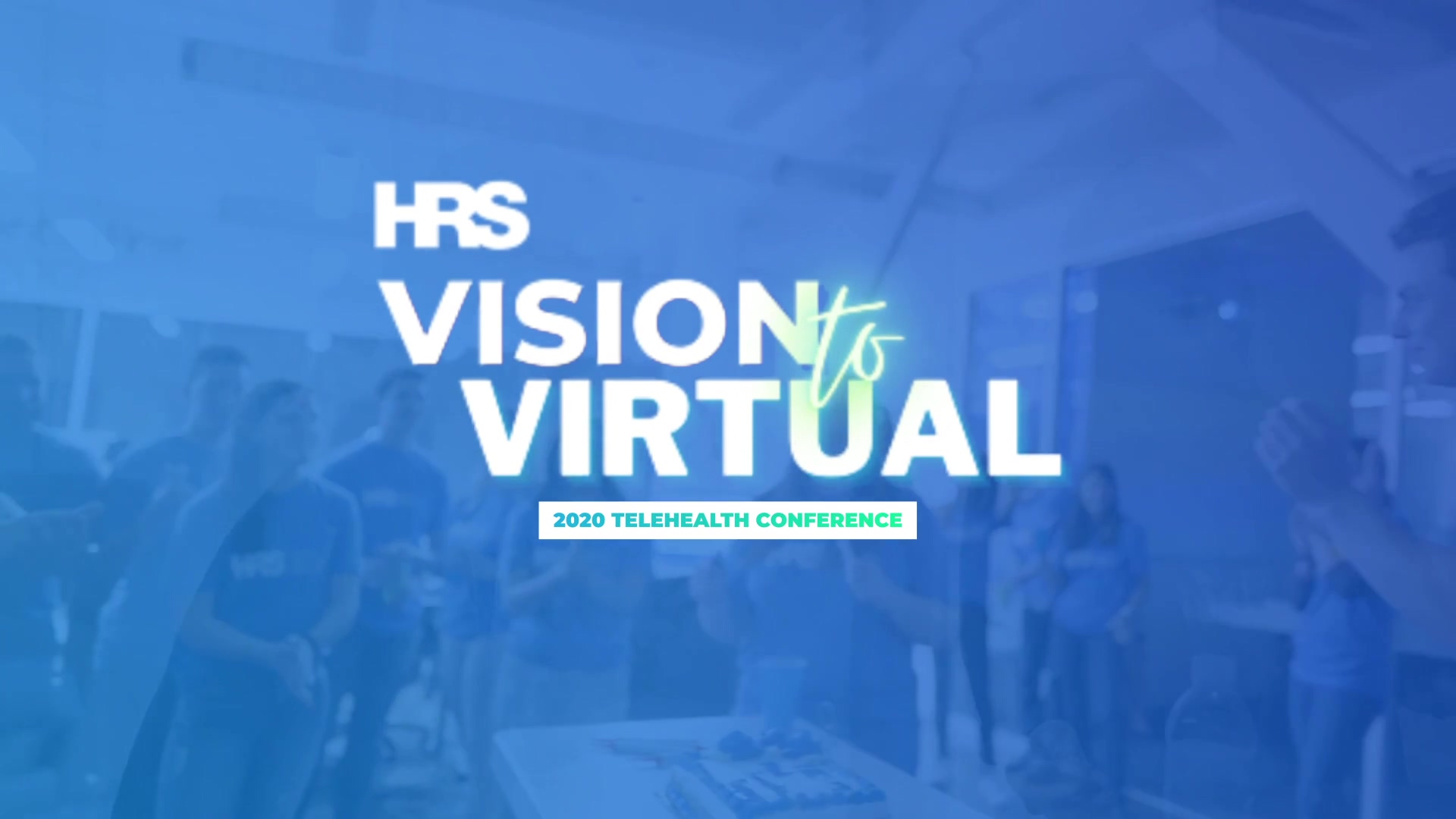
October 2020
Telehealth News: Research & News Recap
Interest in remote patient monitoring (RPM) and its positive impact continues to grow as providers see the benefits of adding telehealth to their workflow. This has led to increased and extensive research on telehealth as well as changes to government policies. Explore recaps from Health Recovery Solutions’ Vision to Virtual event that took place remotely from October 15 - 16, 2020. You can access session recordings and a FAQ below.
Part I. Research Findings - Remote Patient Monitoring and Telehealth
In this section three studies conducted on physical therapy and post-operative RPM and telehealth topics are analyzed. Real quantitative and qualitative data from telehealth patients was collected, studied, and conclusions were drawn in the studies included below. The results point to the positive impacts of RPM in healthcare and the growth potential of telehealth.
Article 1
Parent Perspectives of an Occupational Therapy Telehealth Intervention
What was studied?
In this 2019 study, researchers from the University of Kansas, Rush University, Dunn and Pope Coaching and the University of Missouri, studied the impact that telehealth had for families of children with autism spectrum disorder (ASD). The goal over the 12-week participation was to understand the lived experiences of parents whose children received a telehealth-delivered occupational therapy (OT) intervention. The study used semi-structured interviews and subsequent thematic content analysis to understand how parents perceived telehealth and the associated content.Patient Group
Participants were randomly recruited from a previous quantitative study where they were selected if parents had a child under 7 years of age with ASD. Additionally, all families were required to read/speak English fluently.
Participants were excluded if they did not complete all post-intervention assessments. Out of 17 participants, 9 were randomly selected, and 8 completed the interview; one participant indicated they were too busy to complete an interview at the time of data collection. Children’s ages in this sample ranged from 28–79 months. All parents completed sessions approximately once a week for 12 weeks and met with an occupational therapist (OT) for approximately 45–60 minutes. During the first session parents created goals with their therapist which included:
- Mealtime
- Toilet training
- Social interactions
- Communication
- Sleep
- Play
- Transitions
Research Findings
Three main themes emerged from the data that parents expressed about the telehealth in their everyday lives:
- Compatibility with Everyday Life
- Collaborative Relationship
- Parent Empowerment
These themes were described by parents as how telehealth fit within their daily lives, how it supported a collaborative relationship with the OT, and how the content of the intervention built a sense of empowerment.
Why do these findings matter?
Being a parent of a child with ASD can be challenging and trying. It’s easy to get frustrated when there’s a disconnect in the relationship between parent, child and occupational therapist. Noting the impact telehealth has on their own lives as well as their child’s, parents are seeing their children progress towards developmental and behavioral milestones with telehealth interventions.
Access the full article, here.
Date Published: June 19, 2020
Wallisch, A., Little, L., Pope, E., & Dunn, W. (2019). Parent Perspectives of an Occupational Therapy Telehealth Intervention. International journal of telerehabilitation, 11(1), 15–22. https://doi.org/10.5195/ijt.2019.6274
Article 2
HSS@Home, Physical Therapist-Led Telehealth Care Navigation for Arthroplasty Patients: A Retrospective Case Series
What was studied?
As the rate of total joint arthroplasties performed in the US continues to increase, so does the push towards value-based care. Telehealth is one option for caring for arthroplasty patients post-surgery while limiting costs and improving communication with the surgical team.
In this 2020 study out of HSS Journal, the implementation of HSS@Home, a telehealth rehabilitation program that uses patients’ existing technology like smartphones or tablets, was used in patients after they had undergone total knee or total hip arthroplasty.
Of 32 patients referred, 19 patients were enrolled in the program after undergoing a pre- and post-operative screening process. A telehealth physical therapy navigator program assisted patients in following exercise and mobility routines via video visits. It addressed patient concerns about the transition to outpatient therapy.
Research Findings
Nurse practitioners were consulted for all patients, predominantly for non-emergent reasons like prescriptions, wound checks, and medication adjustments. Feedback from patients and physicians was positive, and no overutilization of care was found. Of the 19 enrolled patients, there were no readmissions. Patients were found to be engaged in their health and comfortable undertaking their PT at home.
Why do these findings matter?
Conducting this study aimed to find a way to limit the overuse of care and costs, while improving communication with the surgical teams. HSS@Home was a promising alternative to live, in-home physical therapy. It was found effective in monitoring this series of patients after hip or knee arthroplasty. This preliminary data sets the stage for further research into the use of telehealth technology to provide rehabilitative care to arthroplasty patients.
Access the full article, here.Date Published: August 22, 2019
Fisher, C., Biehl, E., Titmuss, M.P. et al. HSS@Home, Physical Therapist-Led Telehealth Care Navigation for Arthroplasty Patients: A Retrospective Case Series. HSS Jrnl 15, 226–233 (2019). https://doi.org/10.1007/s11420-019-09714-x
Article 3
Telehealth Delivery of Outpatient Pediatric Surgical Care in Hawaii: An Opportunity Analysis
What was studied?
In the state of Hawaii, nearly all pediatric surgical care is delivered on the main island of O‘ahu at the state’s primary tertiary children’s hospital. Outpatient clinic visits require patients and families to travel to O‘ahu which can significantly drive up costs in travel expenses. This study aimed to characterize potential telehealth candidates over a four-year period to estimate the opportunity for telehealth delivery of outpatient pediatric surgical care and measure potential cost-savings.
In the four-year period, there were 1,081 patients seen in the pediatric surgery clinic from other Hawaiian islands. Of the 1,081 patients, 335 (31%) of the patients were deemed appropriate candidates for telehealth visits.
Patient Group:
A group of seventeen subjects with a median age of 69.7 years, with moderate to severe COPD received RPM tools. With over 2,618 patient-days (just over 7 patient-years) of monitoring, researchers obtained daily symptom scores, treatment adherence, self-reported activity levels, daily spirometry, inspiratory capacity, and oxygenation. Data points were used to identify predictors of exacerbations.
Previous remote monitoring studies in COPD patients demonstrated the reliability of daily spirometry performed at home. Certain metrics like FVC, FEV1 and PEF have been known to decrease during exacerbations.
Research findings
Of the 335 eligible telehealth candidates, 37% of visits were coded as follow-up appointments, 33% were coded as post-operative visits, and 31% were coded as initial encounters. The most common pathologies observed for appropriate telehealth candidates were:
- inguinal hernias
- stable medically managed hemangiomas
- pectus excavatum
- umbilical hernias
- gastrostomy tube visits that did not require exchange of the feeding tube
Utilizing data provided from Hawaii Medical Service Association (HMSA), the average cost per round trip from a neighboring island was $112.53 per patient, leading to a potential cost savings of $37,697 over four years. This cost data included only the cost of plane flights for the patient, not including their family member, and did not include costs for rental car, hotel, opportunity costs, etc.
Why do these findings matter?
Multiple studies have shown that telehealth services present several advantages without compromising patient care. In the case of the state of Hawaii, a major challenge pediatric patients and their parents face is the commute from home to the main island of O‘ahu with the accompanying travel cost (plane, rental car, hotel, etc.). For some parents this cost is not just for the child and themselves, it may also be for other children, driving costs even higher. This study proves that when possible, telehealth is a cost-effective and promising way of offering patient care for post-operative appointments.
Access the full article, here.
Date Published: August 22, 2019
Laferriere, N. R., Saruwatari, M., Doan, X. L., Ishihara, K. B., Puapong, D. P., Johnson, S. M., & Woo, R. K. (2020). Telehealth Delivery of Outpatient Pediatric Surgical Care in Hawai'i: An Opportunity Analysis. Hawai'i journal of health & social welfare, 79(5 Suppl 1), 19–23.
Part II. Vision to Virtual Recap
Health Recovery Solutions’ Vision to Virtual was a forum for innovators, healthcare executives, telehealth users, and technology champions to discuss the role of telehealth and RPM in today’s healthcare continuum.
On October 15th and 16th, Vision to Virtual welcomed HRS clients and healthcare leaders from across the industry to network, brainstorm, and discuss how telehealth is revolutionizing healthcare.
Vision to Virtual Recap
Thanks to our incredible speakers and attendees, Vision to Virtual was a great success. Please find highlights and recaps from a few sessions below that cover topics discussed, speaker insights, and more.
- Launching a Telehealth Program in Response to COVID-19: During this session, Michigan Medicine and Emerest Health discuss how they rapidly responded to the COVID-19 pandemic with telehealth and RPM. The speakers discuss program goals, patient satisfaction, inclusion criteria, challenges they experienced, and much more. You can read the session recap, here.
- Home Health Care News described highlights from our session Optimizing Virtual Care: Virtual Visit Best Practices with speakers Kim Putnam of ProMedica Home Health Care and Mandy Johnson of Banner Home Health Care. Putnam and Johnson discussed the public health emergency and the shortcomings and limitations of current health care delivery systems. You can find the article here.
- In our Vision to Virtual session, COVID-19 Insights: Pivoting a Telehealth Program in Response to COVID-19, Donna Turlington of Liberty Homecare and Hospice, Danielle Flynn of Penn Medicine Home Health, and Kelly Pollard of Baycare, spoke about how providers are adapting to continue providing care to their vulnerable patient populations. You can access the session recording here.
You can access the session recordings, here.
Access the full article, here.
Date Published: September 1, 2020
Wicklund, Eric. “CMS Proposes Significant Changes to Remote Patient Monitoring Coverage” MHealthIntelligence, MHealthIntelligence, 1 Sept. 2020, https://mhealthintelligence.com/news/cms-proposes-significant-changes-to-remote-patient-monitoring-coverage.





